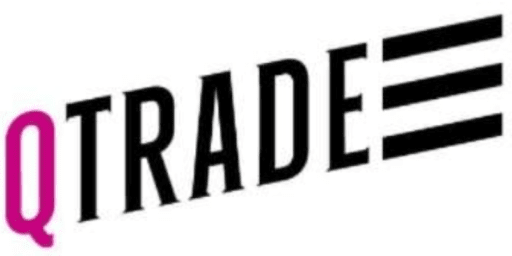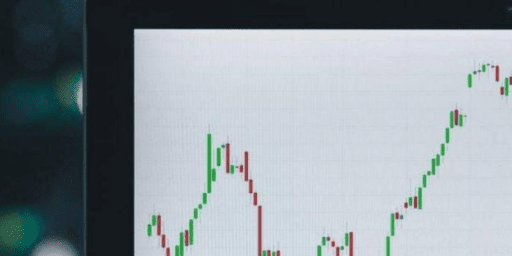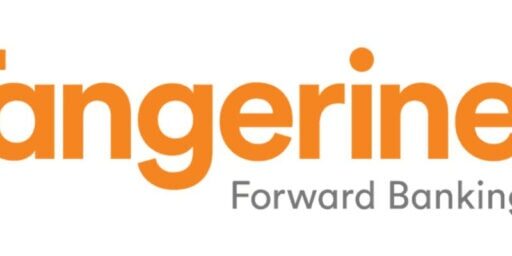Wealthsimple vs. Tangerine in 2025
If you’re exploring online banking and investment options in Canada, two names you’ll frequently come across are Wealthsimple Invest and Tangerine Bank. Both are major players in the digital financial space, but they shine in different areas. So, how do they stack up against each other?
In this comparison article, we’re putting Wealthsimple Invest and Tangerine’s investment services head to head. But keep in mind, this isn’t your typical robo-advisor showdown like our Wealthsimple vs Justwealth article. That’s because Tangerine Bank is a bank, while Wealthsimple is an investment platform. For this matchup, we’re focusing specifically on Tangerine’s investment options versus Wealthsimple’s robo-advisor service, Wealthsimple Invest.
Which one comes out on top? If you’ve checked out our list of the Top Robo-Advisors in Canada, you might already have a hunch – but let’s dive into the details and see how they compare.
Wealthsimple or Tangerine? Quick Comparison Chart
Tangerine | WealthSimple | |
General Concept | Passive Investing | Passive Investing |
Fees (Management Fees & MERs) |
|
|
Investment Options | ||
SRI Options | ||
Minimum Investment | ||
Returns | 3.17-9.29% annualized growth for mutual funds. 2.60%-9.39% annualized growth for ETF portfolios | 5.6%-8.2% annualized growth for classic ETF portfolios |
Bonus Perks/Features | None |
|
Additional services |
|
|
Mobile App | ||
Promo Offer | $50 sign-up bonus | |
Sign Up |
Of course, we have more to say than we could cram in a single chart. Our detailed Wealthsimple vs Tangerine comparison below will show you exactly how the two investment platforms compare. We’ll show you the similarities and tease out exactly how they’re different – and (most importantly) what those differences mean for you.
By the time we’re done, you’ll have a clear picture of what makes each one stand out and which company is the better option for your hard earned dollars.
Wealthsimple vs Tangerine: Different Institutions, Similar Approach
Wealthsimple is a fintech company, and Tangerine is a digital bank, but both maintain a commitment to making passive investing easy and fun (OK, well, easy anyway). Tangerine has been in the game for over 10 years, offering investors their custom diversified mutual funds with the same “Invest on Autopilot” approach that companies like Wealthsimple are selling.
They’re like the granddaddy of robo-advisors (everyone say, “Thank you, Tangerine”).
However, doing it for longer doesn’t mean doing it better.
Companies like Wealthsimple have had the opportunity to build on the foundation that Tangerine created, making improvements where Tangerine failed to innovate. Tangerine just started offering ETF portfolios a few years ago, and we wouldn’t be surprised if it was because they felt the heat from robo-advisors like Wealthsimple.
Over the past few years, Wealthsimple has greatly expanded its offerings. They have begun to offer more and more bank-type services, constantly innovating to provide their customers with a wide range of products and services.
If you’re feeling a bit more conservative with your hard-earned money – perhaps you need cash on hand for an upcoming purchase – Wealthsimple has evolved to have options for low risk investments. They now offer High Interest Savings Accounts (HISAs) and Chequing Accounts, both of which offer better ongoing interest rates than Tangerine. Wealthsimple doesn’t currently offer Guaranteed Investment Certificates (GICs), so if you’re looking for this option, we recommend EQ Bank.
While Wealthsimple was once focused on being a dedicated robo advisor, they now also offer brokerage accounts: Wealthsimple Self-Directed Investing, previously known as Wealthsimple Trade. If you’re interested in learning more about self-directed investing via brokerage accounts, check out our Top 10 Online Brokers in Canada article.
At this point in time, you can even have a mortgage with Wealthsimple, buy crypto coins with Wealthsimple Crypto, and complete your tax return with Wealthsimple Tax. We are always keeping our eye on the evolution of Canadian online fintech institutions, and we are curious to see what innovation Wealthsimple will produce next.
Wealthsimple vs Tangerine: Security
Wealthsimple’s custodial institution (the bank that actually holds your money) is a member of the Investment Industry Regulatory Organization of Canada (IIROC) and the Canadian Investor Protection Fund (CIPF). All accounts have CIPF protection up to $1 million.
Unlike Wealthsimple, Tangerine is an actual bank, so it’s a member of The Canada Deposit Insurance Corporation (CDIC) in its own right. All accounts have up to $100,000 insurance.
Basically, both Wealthsimple and Tangerine take security seriously. They (and their custodial institution in the case of Wealthsimple) are regulated, and they both use data encryption and 2-factor authentication to keep your information (and your money) secure.
Wealthsimple vs Tangerine: Fees
Wealthsimple’s fees are two-fold: account fees and MER. Wealthsimple charges 0.4-0.5% on all accounts, plus MERs of 0.1-0.7% depending on your portfolio—this gives you a range of 0.5-0.9%. Meanwhile, Tangerine opted to charge a single fee. This ranges from 0.76% for their new ETF portfolios and 1.06% for their classic mutual fund portfolios (ie. “Core Portfolio”).
Neither company has the lowest fees for passive investing (check Questwealth Portfolios if you’re looking to slash prices), but context is everything.
While Tangerine’s classic portfolios are more expensive than even the priciest Wealthsimple portfolio, keep in mind that they’re about half the price of your typical mutual fund. This is just one of those areas where you can tell that Tangerine is a bank, not a robo-advisor.
On a related note, Tangerine will charge an inactivity fee on unused accounts. If you set up a savings account when you join Tangerine, and then you focus on your investment account(s) and don’t use the savings account, you’ll accrue inactivity fees of $10 after the first year, $20/year after the first two years. And at 10 years, there’s a $40 inactivity fee and you lose any unclaimed assets. Just something to keep an eye on.
Wealthsimple vs Tangerine: Sign-up
Signing up for both Wealthsimple and Tangerine is quick and easy. They’ll both ask for some personal identification and financial information, and they’ll take you through questions which help them determine your investment goals and preferred level of risk.
Wealthsimple vs Tangerine: Welcome Bonus
Wealthsimple currently has a promotion for our readers: a $50 cash bonus if you open an account and invest $500. If you’ve been around for even a little while, you know how we feel about welcome bonuses (We’re fans of free money. Obviously).
Wealthsimple vs Tangerine: Minimum Balance
Some robo-advisors, like Justwealth (our #1 Canadian robo advisor) or Nest Wealth, require a minimum balance $5,000 and $1,000 respectively. Wealthsimple and Tangerine have opted to keep investing more accessible. Wealthsimple has no minimum balance at all (you can literally start investing with $5) and Tangerine requires only $25 to begin investing.
Wealthsimple vs Tangerine: Account Options
Tangerine offers a decent selection of accounts: RRSP, TFSA, RRIF as well as non-registered investment accounts. They offer joint as well as personal accounts.
Wealthsimple offers all of these options—and also offers LIRA, LIF, RESPs, and FHSA. Perhaps it’s because they’re investment-focused, while Tangerine is a bank that also offers investments, but whatever the reason, we give full points to Wealthsimple Invest for providing account holders with the most options.
Wealthsimple vs Tangerine: Investment Selection
Wealthsimple creates portfolios from a selection of 50+ ETFs from a variety of top ETF providers. They have 5 socially responsible options, and one Halal ETF available in 3 risk levels.
Tangerine’s core portfolios aren’t ETFs at all, they’re in-house mutual funds which track the market in the same way that ETFs do (think of them as the precursor to ETFs with a lower fee than mutual funds, but higher than ETFs). Their Global ETF Portfolio on the other hand, is made up of ETFs: 6 different Scotia ETFs in a variety of asset allocations depending on your risk tolerance and financial goals.
Wealthsimple vs Tangerine: Portfolio options
Wealthsimple offers Standard, SRI, and Halal portfolio options at personalized levels of risk from 1-10. Any dividends are automatically reinvested, and portfolios are rebalanced whenever they stray more than 30% from their ideal asset allocation.
Tangerine offers 5 core (mutual fund) portfolios, 4 Global ETF portfolios, and 4 SRI portfolios, all of which vary by risk level and financial goal. They’re rebalanced quarterly. Dividends are automatically reinvested, except for non-registered accounts, where you can indicate your preference for reinvestment or distribution.
We appreciate Wealthsimple’s attention to asset allocation and the fact that they rebalance whenever the portfolio strays too much. We don’t love how Tangerine sticks to the calendar and only rebalances quarterly, no matter what happens in the market over the course of the season though.
Tangerine’s tagline is “invest on autopilot,” but we’d like to see that line apply a bit less to the bank itself. We prefer knowing that someone has an eye on our assets from month to month.
Wealthsimple vs Tangerine: Performance
Tracking performance is a tricky business, and to be honest, it doesn’t tell you a whole lot. At the time of writing, Wealthsimple is sitting between 5.6% and 8.2% annualized growth, while Tangerine is returning 2.60%-9.39% with their ETF portfolios.
Tangerine’s Global ETF portfolios haven’t been around for long – they have just recently started reporting on their annualized returns. So, this range is calculated over a much shorter period of time than Wealthsimple’s, which takes away from it being a direct comparison. However, it does give some information on what has happened in the past. That said, the portfolios are basically tracking the same markets – using the same index investing strategy. That means the returns are likely to be similar for each risk level over the long term.
When talking about performance, Justwealth, which takes top place on our list of Best Canadian Robo Advisors, delivers the best performance track record. How do they do this? Well, they are a fully independent firm, meaning that they can choose the best ETF for each asset class regardless of which company has created the ETF.
This is a big departure from Tangerine, for example, which only uses Scotia ETFs. This advantage of Justwealth’s has allowed them to achieve the best after-fee returns of any Canadian robo advisor, a fact which has even been spouted by the Globe and Mail.
Wealthsimple vs Tangerine: Mobile App and Website
Both Wealthsimple and Tangerine have well-designed and popular apps. In fact, at the time of writing this article, they’re sitting at #3 and #25 in the Finance category of the Apple App Store.
Tangerine’s app feels like a smooth and intuitive banking experience. The app has 2-factor authentication, and if you’re a day-to-day user of Tangerine Bank, you can complete many other actions from your phone or iPad. They have a solid 4.8 star rating on the App store.
Wealthsimple Invest’s app is streamlined and easy to use. It allows you to monitor your investments, fund your account, and contact the financial advising team easily. Wealthsimple’s user experience has been at the heart of their company since day 1, and they have invested a ton of time and money into fine tuning everything.
App store reviews are tricky because they become a dumping ground for any and all complaints about a company or its services (not just about the app), but the ratings for both the Wealthsimple and Tangerine apps are well over 4/5 stars. Clearly, they’re doing something right.
Wealthsimple vs Tangerine: Perks
One feature we love about Wealthsimple is the extra perks that are available for account holders with higher balances. Accounts over $100,000 get a discounted fee, 2.25% interest earned on their chequing account, complimentary USD accounts, access to financial advice, and awesome partner rewards.
Accounts over $500,000 get all that, with 2.75% chequing interest earned, and 3 partner rewards. These partner rewards include perks such as Uber discounts, Strava memberships, the Headspace app, airport lounge passes, a subscription to The Globe and Mail, willful online will service, and more.
Maybe it’s because investing is just one of the many things Tangerine does, but they don’t give clients extras for being big investors. It’s too bad, because Tangerine’s core portfolios have higher fees than Wealthsimple’s accounts – it would be nice if some of that money came back to you in the form of lower fees, personalized services, or discounts.
Wealthsimple vs Tangerine: Customer Service
Both Wealthsimple and Tangerine pride themselves on excellent customer service.
Tangerine has ranked #1 in the J.D. Power Canada Retail Banking Customer Satisfaction Study for the past 13 years. This award tracks customer service among mid-sized banks and includes categories such as convenience, communication and advice. Their licensed investing experts are available by phone between 8 am and 8 pm Eastern time, Monday to Friday.
Wealthsimple has a dedicated team of portfolio managers and financial experts on call by phone (Monday to Friday between 9 am and 6 pm Eastern time) or via email. Their financial advisors are fiduciaries, which means that they’re legally obliged to provide information that’s in your best interest. In a world where it can be hard to know whether people have our best interests at heart, it’s great to know that Wealthsimple’s team does, by law.
Tangerine or Wealthsimple? FAQ
Wealthsimple vs Tangerine Comparison: The Verdict
Both Wealthsimple and Tangerine offer hands-off investment solutions that take the stress out of managing your own portfolio. You don’t have to worry about buying and selling investments. They come with reasonable fees and provide socially responsible investment options for those who want their money to align with their values.
That said, Wealthsimple clearly has the upper hand.
It offers more account types, lower management fees, and access to a wider range of ETFs from various top providers—while Tangerine, as Scotiabank’s digital arm, sticks exclusively to Scotia ETFs.
Wealthsimple also sweetens the deal with a welcome bonus and extra perks for higher-balance accounts. Signing up is quick and easy, and their platform is intuitive and well-designed.The only real reason to choose Tangerine over Wealthsimple? If you’re already a Tangerine Bank client (or plan to become one), and want the convenience of keeping all your finances under one roof.
I've Completed My Million Dollar Journey. Let Me Guide You Through Yours!
Sign up below to get a copy of our free eBook: Can I Retire Yet?










